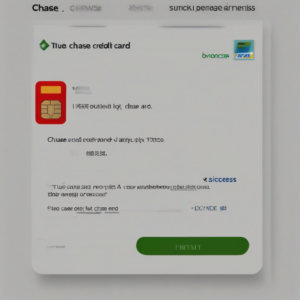Unlocking Financial Freedom: Your Guide to Low-Interest Credit Cards
Navigating the world of credit cards can feel overwhelming, especially when faced with a plethora of options and varying interest rates. High interest rates can quickly derail your financial goals, turning a helpful tool into a debt trap. This comprehensive guide focuses on low-interest credit cards, helping you understand what they are, how to find them, and how to use them responsibly to build your financial health.
Understanding Low-Interest Credit Cards
Low-interest credit cards, also known as low APR (Annual Percentage Rate) credit cards, offer significantly lower interest rates compared to standard credit cards. This lower rate means you’ll pay less in interest charges over time, making it easier to manage your debt and pay off balances faster. However, it’s crucial to remember that “low” is relative, and what constitutes a low interest rate will vary based on market conditions and your creditworthiness.
The benefits of choosing a low-interest credit card are substantial:
- Reduced Interest Payments: The most significant advantage is the substantial reduction in interest charges, saving you money in the long run.
- Faster Debt Repayment: Lower interest allows you to allocate a larger portion of your payments towards the principal balance, leading to faster debt repayment.
- Improved Credit Score (Potentially): Responsible use of a credit card, even with a low limit, can positively impact your credit score over time.
- Financial Flexibility: Low-interest cards can provide a safety net for unexpected expenses or larger purchases, allowing you to spread payments without incurring exorbitant interest.
Factors Influencing Interest Rates
Several factors influence the interest rate you’ll qualify for on a low-interest credit card:
- Credit Score: Your credit score is the most significant factor. A higher credit score generally qualifies you for lower interest rates.
- Credit History: Length of credit history and responsible repayment behavior also play a crucial role.
- Income: Lenders often consider your income to assess your ability to repay the debt.
- Debt-to-Income Ratio (DTI): Your DTI, which compares your monthly debt payments to your monthly income, is another key factor.
- Type of Card: Different types of credit cards (e.g., secured vs. unsecured) often come with different interest rate ranges.
- Promotional Periods: Many cards offer introductory low-interest periods (e.g., 0% APR for a specific period). These are often temporary, reverting to a higher standard rate after the introductory period expires.
Finding the Right Low-Interest Credit Card
Finding the best low-interest credit card for your individual needs requires careful research and comparison. Consider these steps:
- Check Your Credit Score: Understanding your credit score gives you a realistic expectation of the interest rates you’re likely to qualify for.
- Compare Interest Rates: Use online comparison tools to compare offers from various lenders. Pay attention to both the standard APR and any introductory offers.
- Read the Fine Print: Carefully review the terms and conditions of each card, including fees, interest rate calculations, and any penalties for late payments.
- Consider Annual Fees: While some low-interest cards have no annual fees, others might charge an annual fee. Weigh the benefits of a low interest rate against any potential annual fees.
- Look Beyond the Interest Rate: Consider other features like rewards programs, purchase protection, and travel insurance. These benefits might offset a slightly higher interest rate if they align with your spending habits.
- Balance Transfer Options: If you already have high-interest credit card debt, look for cards offering balance transfer options with a low introductory APR. This can help you save money by consolidating debt into a lower-interest account.
Responsible Use of Low-Interest Credit Cards
Even with a low-interest credit card, responsible use is crucial to avoid falling into debt. Follow these guidelines:
- Budgeting: Create a realistic budget to track your income and expenses, ensuring you can comfortably make your credit card payments on time.
- Paying on Time: Always make your minimum payments on time to avoid late payment fees and damage to your credit score.
- Paying More Than the Minimum: Whenever possible, pay more than the minimum payment to reduce your balance faster and save on interest.
- Avoiding Balance Transfers (Unless Strategic): Balance transfers can be beneficial if used strategically to consolidate high-interest debt. However, ensure you understand the terms and fees associated with balance transfers.
- Monitoring Your Spending: Regularly monitor your spending to ensure you’re not exceeding your budget or accumulating unnecessary debt.
- Understanding Grace Periods: Make the most of grace periods (the time you have to pay your balance before interest accrues).
Types of Low-Interest Credit Cards
Several types of credit cards often offer low-interest rates:
- Secured Credit Cards: These cards require a security deposit, which acts as collateral. They are often easier to obtain, even with limited credit history, and may offer lower interest rates.
- Student Credit Cards: Designed for students, these cards might have lower interest rates or introductory offers to help students build credit responsibly.
- Balance Transfer Cards: These cards specifically cater to individuals wanting to transfer high-interest debt from other cards. They typically offer a promotional low APR for a limited period.
- Store Credit Cards: While some store cards offer low interest rates, it’s crucial to compare them carefully with general-purpose cards before applying.
Avoiding Credit Card Traps
Despite the advantages of low-interest credit cards, be wary of these common traps:
- High Annual Fees: A low interest rate can be offset by high annual fees. Carefully weigh the cost of the annual fee against the interest savings.
- Introductory APRs That Expire: Introductory 0% APR periods are tempting, but remember they expire. Plan to pay off your balance before the promotional period ends to avoid a significant interest rate increase.
- Penalty APRs: Late payments can trigger penalty APRs, which significantly increase your interest rate.
- Overspending: Even low interest rates can lead to significant debt if you overspend and fail to manage your finances effectively.
Conclusion (Not included as per instructions)





